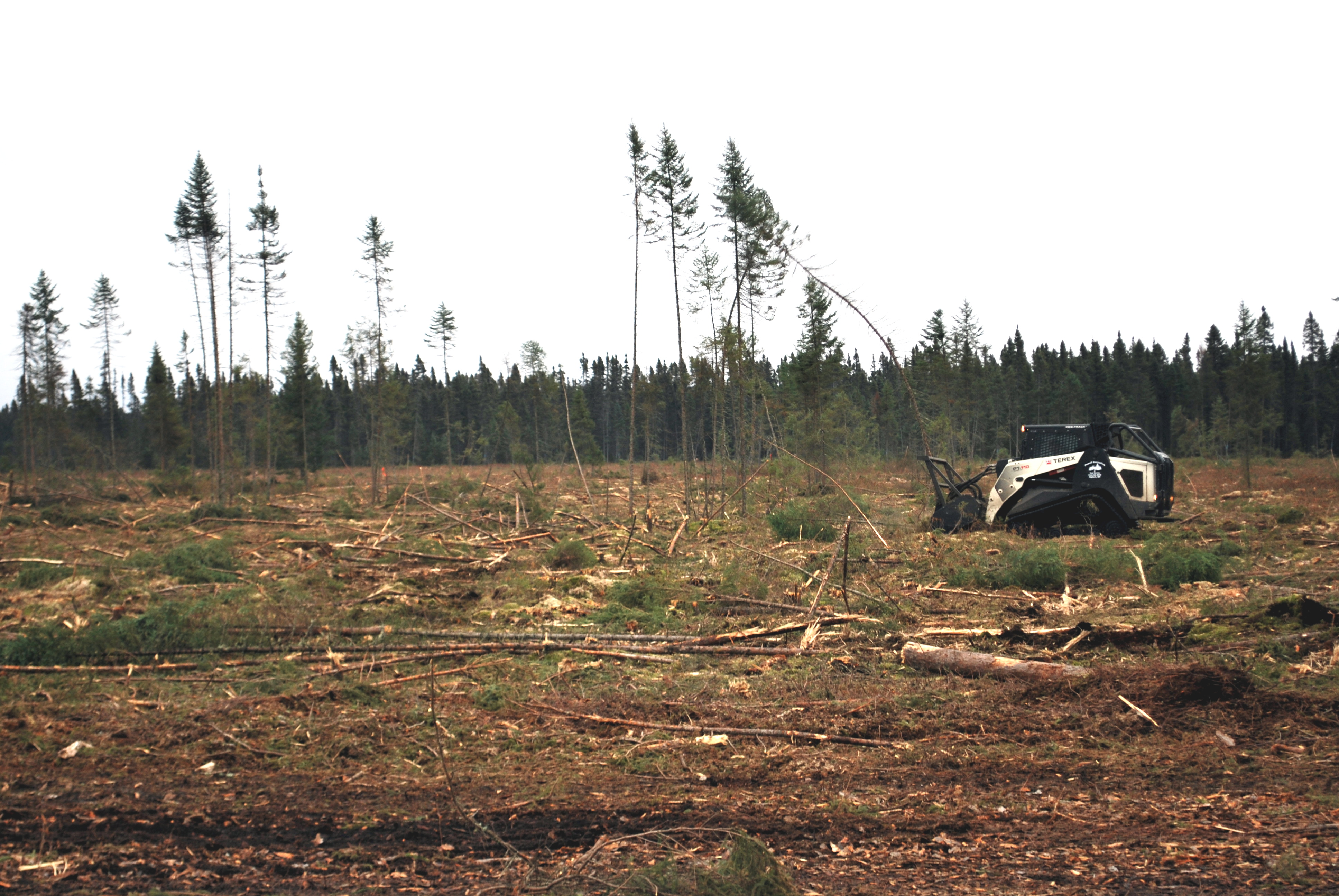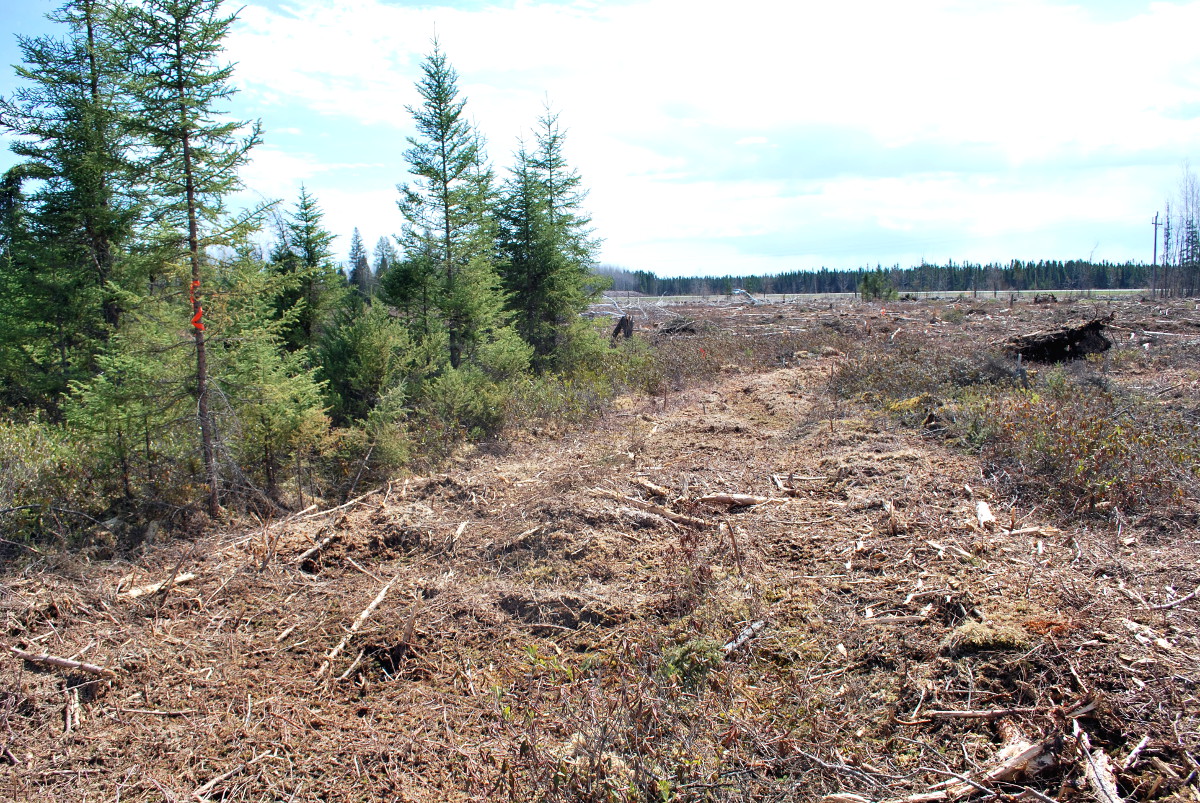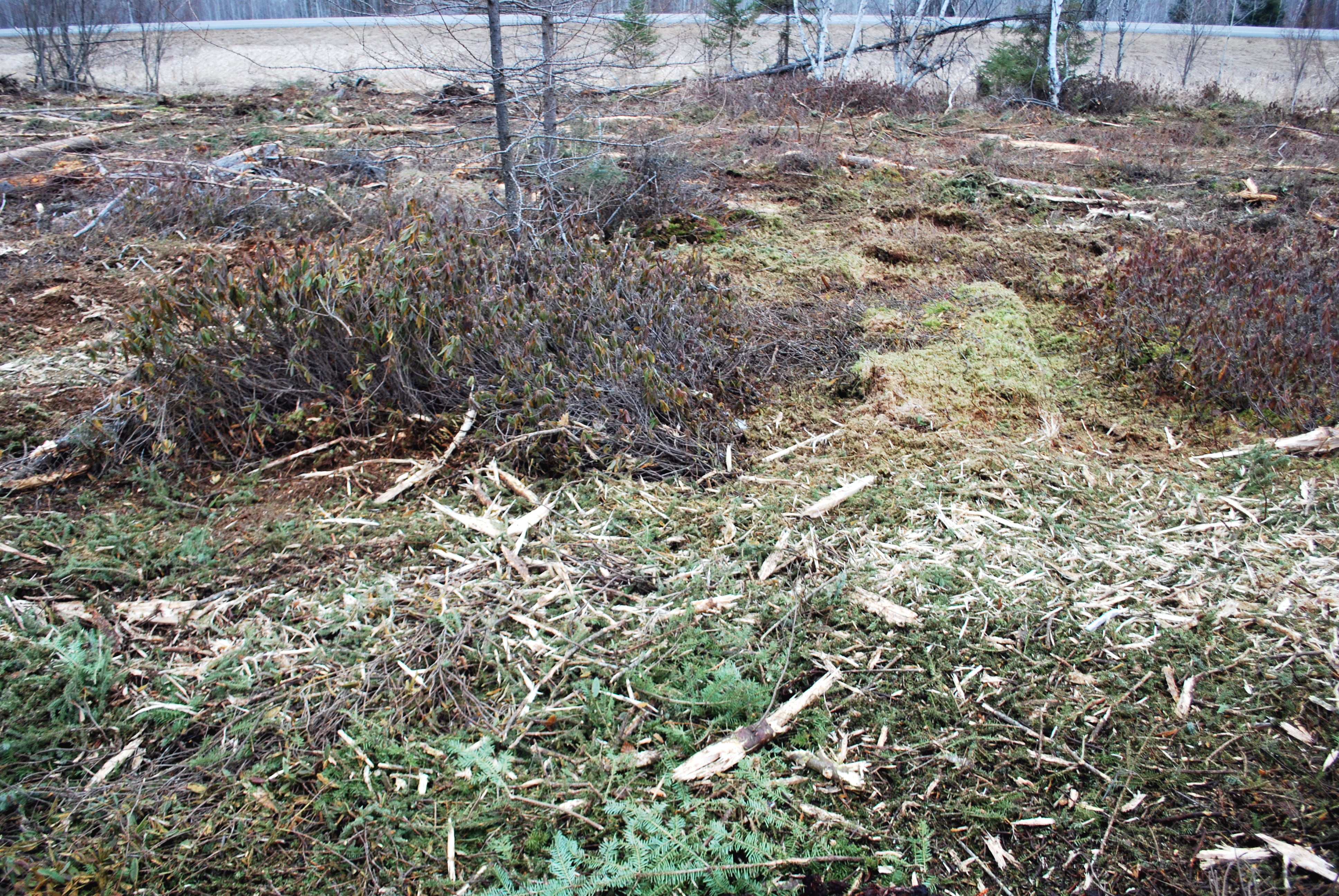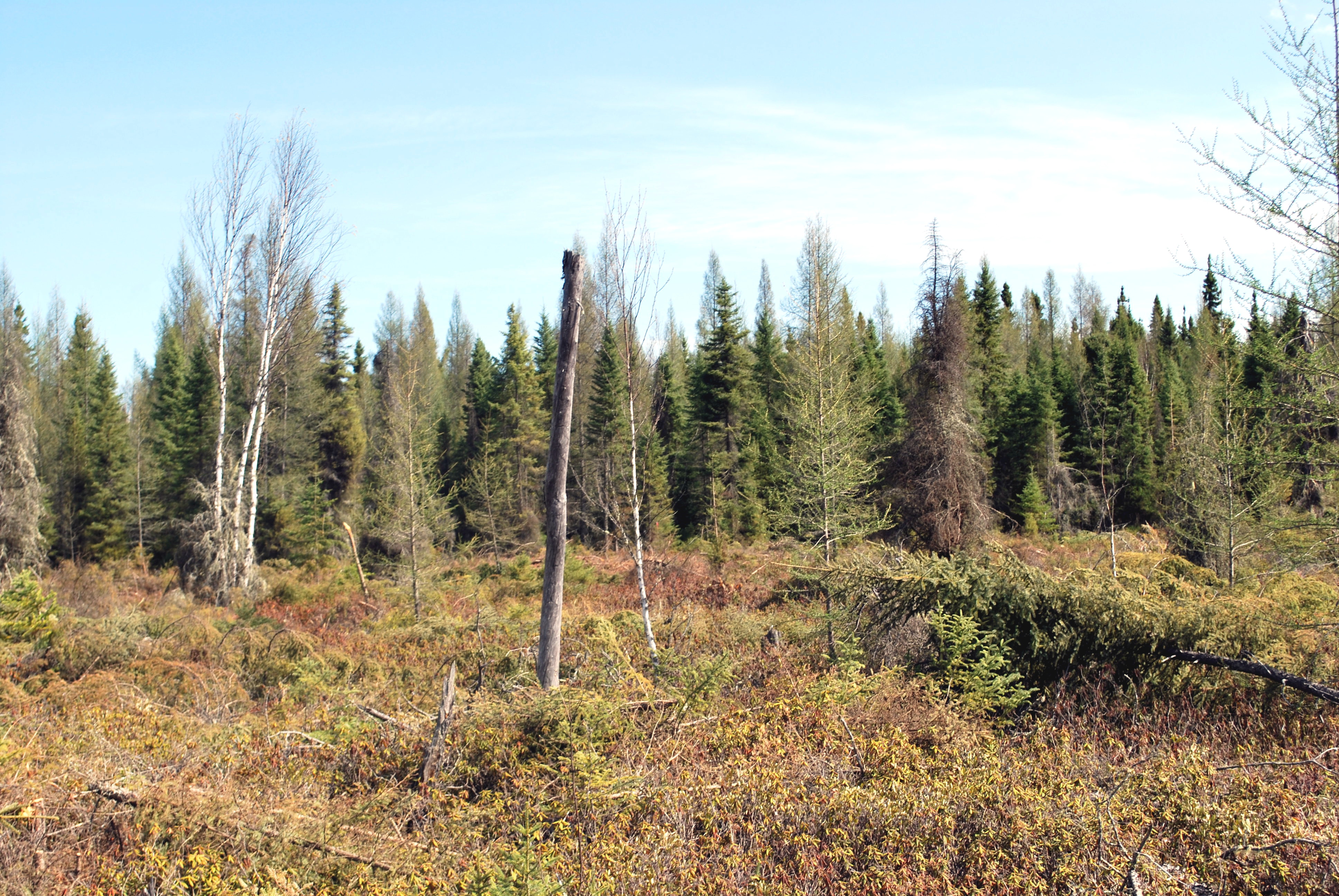Overview
Black spruce dwarf mistletoe is an important disease challenge facing managers of black spruce stands. Infested stands usually yield much less harvestable timber volume than uninfected stands, so infested stands are treated after harvest to reduce the presence of dwarf mistletoe in the regenerating cohort. This project compares new treatments to observe the feasibility and cost of controlling the disease, while providing a readily accessible area for foresters and biologist to observe effects.
Silviculture Objective(s)

Figure 1: Map of dwarf mistletoe treatment trials
This project's objective was to provide a readily accessible demonstration site to observe the operational challenges of managing dwarf mistletoe infested black spruce stands. The site was previously used as a University of Minnesota demonstration area for observing a mature dwarf mistletoe infested black spruce stand. Three treatments were planned to compare effect and price: hand felling, shearing with a K/G shear blade mounted on a dozer, and mulching using an ASV skidsteer with a fecon grinding head. There was also a control to show no management action. The shearing received no contract bidders and that treatment area was mulched instead. The ASV skidsteer with a fecon grinding head was a new mechanical method of removing black spruce regeneration infected with dwarf mistletoe for Littlefork DNR Forestry.
Pre-treatment stand description and condition
Stand establishment and management history:
Management history is unknown, but stand is assumed to be natural origin.
Pre-treatment species composition:
Black spruce was appraised at 27 cords/acre for these stands.
Pre-treatment forest health issues:
Dwarf mistletoe pockets with infected regeneration were identified by aerial photo analysis. Dwarf mistletoe was also identified by foresters throughout the sale area.
Silviculture Prescription
This stand was harvested in Feb. 2016 using conventional equipment.

Figure 2: ASV with fecon mulching head working through non-merchantable dwarf-mistletoe-infected lowland black spruce
Three 10 acre treatments and a 10 acre control were planned. The planned treatments were: handfelling using a brushsaw, mulching using a skidsteer with a fecon head, shearing using a KG blade on a dozer.

Figure 3: Close up of mulched area with woodchips

Figure 4: Contrast of control area with mulching treatment area
The site was to be aerial seeded at 0.5 oz/acre to black spruce.
What actually happened during the treatment
Harvested Feb. 2016 with conventional equipment.
Timber Sale Regulations:
- Reserve all non-hazardous snags.
- Stump height must not exceed half of stump diameter.
- Conduct sale operations on frozen soil conditions only, except with written permission from State.
- If site damage becomes apparent, alter or cease operations and contact State.
The winter weather of 2015-2016 was affected by El Niño and exceptionally mild. There were no bidders for the lowland shearing section. In response, we expanded the ASV with mulching fecon head treatment to 20 acres. The hand felling was completed in April 2016 and took 18 hours of chainsaw and brush saw work for 10 acres.

Figure 5: Another example of wood chips from ASV with fecon head

Figure 6: Example of handfelling treatment
Aerial seeding of the site occurred in May 2016 at 0.5 oz/acre.
Costs and economic considerations
Treatment of dwarf mistletoe residual seedlings and saplings by ASV with fecon head cost $208/acre. Hand felling by a forester cost approximately 1.8 hours/acre.
Summary / lessons learned / additional thoughts
The results of the ASV with fecon head were very pleasing. The machine was very light on the land and was able to work on minimal frost (1 inch in some places) without breaking through or creating damage to the moss. The ASV was delivered to the site by a standard pickup with a trailer. Both of these allow for longer operation periods during the shorter seasons possible with climate change. The operator commented that operating was rough, so stumps in future sites should be kept as low as possible. The ASV was able to maneuver around non-infected trees to leave diversity and structure on the site. The trees were reduced to chips, allowing a better seedbed and quicker decomposition and nutrient availability.
Hand felling requires mostly chainsaw work, due to the thick stems of the infested trees. Only 10% of the time was spent using a brush saw. Hand felling was challenging due to the unstable ground. Benefits include: light impact on the land, ability to leave non-infected trees and different species, and the ability to leave snags. Operating expense would go up with remote access and this method is time consuming if a contract is not used.
This case study was developed with support from the United States Department of Agriculture's National Institute for Food and Agriculture (USDA-NIFA), Renewable Resources Extension Act (RREA). Project #MIN-44-E02, principal investigator Eli Sagor, University of Minnesota.
